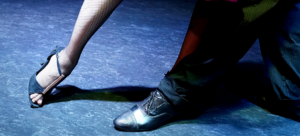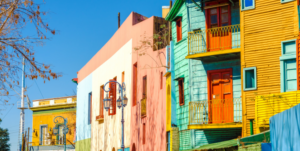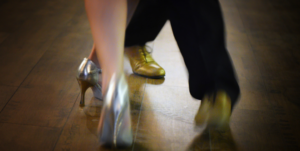The Embrace and Connection
The embrace is the cornerstone of Argentine tango, defining the connection between dancers. There are two primary types of embraces: closed and open. In a closed embrace, dancers are closer, with their chests in contact. In an open embrace, there’s more space between partners. The choice of embrace can vary depending on the tango style.
The Walk and Footwork
The walk is one of the primary steps in tango, characterized by elegance and fluidity. Each step should be firm and precise, with proper weight control. Shifting weight between feet is crucial to maintain balance and connection with your partner. Practicing the walk is fundamental to grasp the basic movements of tango.
Ochos, Turns, and Pauses
Ochos are figure-eight movements performed by both leaders and followers, either forward or backward. Turns involve dancers rotating around a shared axis. Pauses are intentional halts in movement, used to create tension and drama in the dance.
Sanguchitos, Sweeps, and Boleos
The sanguchito, or “little sandwich,” is a figure where the leader “traps” the follower’s foot between their own, resembling a sandwich. Sweeps involve the leader sliding the follower’s foot, creating an elegant visual effect. The boleo is a movement where the follower swings their leg in the air in a circular motion, usually in response to a change in the leader’s direction.
Entrances and Direction Changes
Entrances mark the beginning of a sequence of tango steps and can be straightforward or embellished with movements like ochos. Direction changes are essential for navigating the dance floor and maintaining the dance’s flow, allowing dancers to adapt to their surroundings and introduce variations in their choreography.
Roles of Leader and Follower
In tango, the roles of leader and follower are complementary. The leader initiates movements and guides their partner, while the follower interprets and responds to the leader’s cues. Both roles require skill, sensitivity, and a deep connection to the music.
Different Genres of Tango
While Argentine tango maintains a common structural foundation, its dance style varies across different genres and musical styles, each bringing unique characteristics and nuances to the dance.
Tango Pista
Tango pista is the style danced in milongas, known for its elegance and fluidity. It is danced in a closed embrace, fostering intimate connection and non-verbal communication between dancers. Tango pista emphasizes musicality and precise rhythm interpretation.
Stage Tango
Stage tango is more theatrical, primarily performed in shows. It includes acrobatic movements, complex figures, and elaborate choreographies requiring significant technical skill. This tango style is visually striking, noted for its drama and expressiveness.
Milonga
Milonga refers to both a musical genre and a dance style, characterized by a faster and more cheerful rhythm than tango. Movements are looser and more lively, with the connection between dancers varying from closed to open embrace. Milonga is celebrated for its energy and dynamism.
Tango Vals
Tango vals, or vals criollo, is a fusion of tango with the European waltz. It is danced in triple time, offering a flowing and circular movement quality. Tango vals combines the elegance of the waltz with the passion of tango, creating a unique and captivating dance experience.





